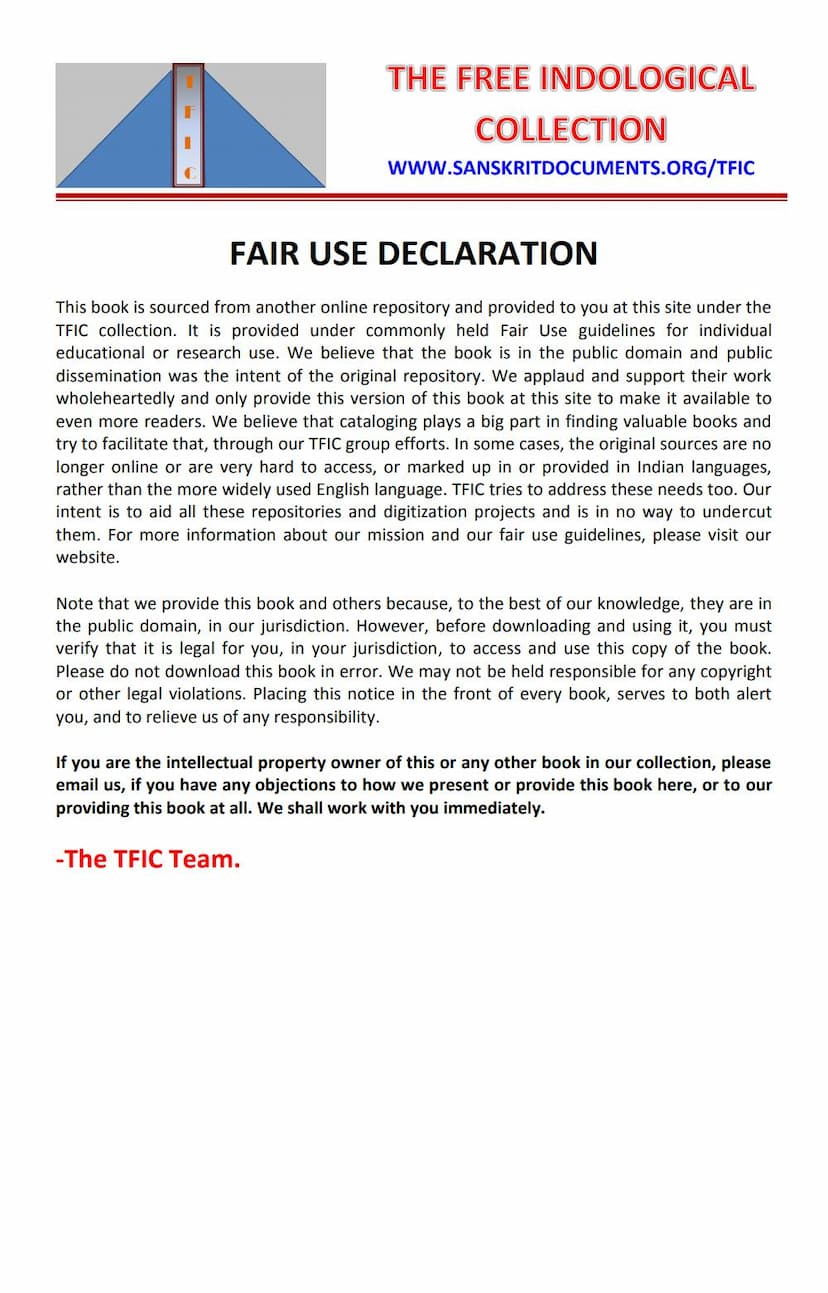Digambar Jain Siddhant Darpan
Added to library: September 1, 2025

Summary
The book "Digambar Jain Siddhant Darpan" (Mirror of Digambar Jain Principles), authored by Pandit Makhanlal Shastri, is a detailed refutation of the views presented by Professor Hiralal Jain at the 12th session of the Akhil Bharatvarshiya Prachya Sammelan. Professor Jain's paper, "Are there any fundamental differences in the doctrines of the Digambar and Shvetambar sects?", posited that there were no core distinctions between the two Jain traditions. The publication aims to counter this assertion by presenting the Digambar perspective with scriptural evidence and logical arguments.
The author and publishers express concern that Professor Jain's views are detrimental to Digambar Jain Dharma and challenge established Digambar principles. The book is presented as a collection of responses from various Jain scholars and ascetics who were inspired to refute Professor Jain's claims.
The core issues addressed in the book, and subsequently critiqued by Shastri, are:
-
Female Liberation (Stri-mukti): While the Shvetambar sect believes women are eligible for liberation, the Digambar tradition, particularly as interpreted from Kundakundacharya, denies this. Professor Jain argued that Digambar scriptures do not strictly prohibit female liberation. Shastri vehemently refutes this, citing scriptures like the Shatkhandagama and its commentaries, which he claims indicate that the fourteen gunasthanas (stages of spiritual development) are described for both males and females. However, he meticulously analyzes these scriptures to show that the term "woman" or "female" in these contexts refers to bhava-stri (psychological femininity) and not dravya-stri (biological femininity), arguing that biological females, due to their physical constitution and inherent characteristics (like impurity and clothing requirements), cannot attain the highest spiritual stages necessary for liberation. He criticizes the idea that females can attain liberation, pointing out logical inconsistencies and scriptural interpretations that prioritize masculine qualities for spiritual advancement.
-
Asceticism and Clothing (Sanyami aur Vastratyag): Professor Jain suggested that ascetics can attain liberation even while wearing clothes, citing certain interpretations of scriptures. The Digambar tradition, however, emphasizes complete nudity (digambaratva) as essential for an ascetic's path to liberation. Shastri counters this by examining scriptures like the Bhagavati Aradhana and Tattvartha Sutra. He argues that while there are distinctions between utsarg (ideal path) and apad (exceptional path) in Jainism, the apad path, particularly concerning clothing, is misrepresented by Professor Jain. Shastri asserts that even in exceptional circumstances or during samadhi-marana (meditative death), the ideal remains nudity, and any allowance for clothing is strictly for lay practitioners in specific situations or a misinterpretation of the scriptures. He champions Kundakundacharya's strong stance against any form of clothing for ascetics, viewing it as a form of parigraha (possessions) that hinders spiritual progress.
-
Omniscient Beings and Hunger/Thirst (Kevali ke Bhukh-Pyasaadi ki Vedna): Professor Jain suggested that omniscient beings (kevalis) experience hunger and thirst, drawing interpretations from Tattvartha Sutra. Shastri strongly refutes this, arguing that kevalis, having annihilated all karmic impurities, are beyond sensory experiences like hunger and thirst. He criticizes the interpretation of Tattvartha Sutra by commentators like Pujyapada and Akalankadeva, suggesting that their reasoning about the residual influence of vedaniya karma (feeling-producing karma) in kevalis is flawed. Shastri emphasizes that the absence of mohanīya karma (delusion-producing karma), which is responsible for attachment and aversion, renders the vedaniya karma ineffective in producing actual sensations of hunger or thirst. He argues that the kevalis' experience of physical sustenance is through subtle, pure karmic matter, not through the worldly process of eating.
Throughout the book, Shastri criticizes Professor Jain's scholarship, accusing him of misinterpreting scriptures, lacking a deep understanding of Jain philosophy, and attempting to merge Digambar and Shvetambar traditions based on superficial readings. He highlights the profound scholarly works of ancient Digambar acharyas like Kundakundacharya, Umaswami, Akalankadeva, and others, asserting their interpretations are consistent and based on the omniscience of the Tirthankaras. Shastri insists that Digambar Jainism is inherently distinct and cannot be reconciled with Shvetambar doctrines on these fundamental issues. The book is presented as a defense of the "pure" Digambar tradition against what he perceives as damaging and inaccurate interpretations.